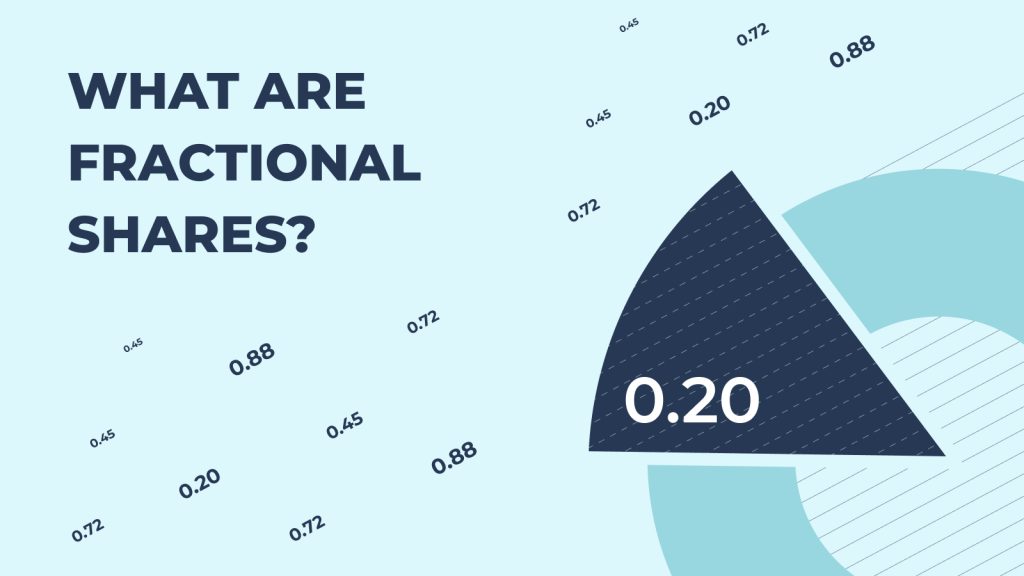Eagle’s View Contrarian Macro Fund, Ltd. earlier this past week won the HFM US Performance award for Newcomer Macro Fund of the year. I have taken the liberty of sharing some of my macro thoughts both with respect to fundamental drivers as well as market mechanics and our trading approach. The purpose of which is to provide insight into how I view markets and the inputs that inform our trading decisions on both a shorter-term and longer-term basis.
First, we must acknowledge that the activity of Friday, Oct. 21st was very unusual and unexpected. This is precisely the kind of thing that I need to look out for when keeping an open mind on the overall direction of trading on an intermediate or longer-term basis. The market will not bottom when I or anyone else expects. It will bottom at an unexpected time with unexpected and repeatedly unusual price action. When investors have asked how I trade, I’ve often said, “I read price action”. This is precisely what I mean when I’ve stated, “I read price action”. I am continuously on guard and taking note of repeated and persistent price action that deviates from expectations. Friday was a data point but, only one data point.
In addition, I must also be aware that the S&P 500 is trading higher than where we were trading briefly on June 16/17 (the date of the very first 75 bps rate hike) despite Fed Funds being 150 bps higher (3.00% to 3.25% today versus June 16 1.50% to 1.75%) and US 10-year note yields being 90 bps higher today versus June 16 at 4.20% versus 3.30%. I must be aware of all of this in the back of my mind.
In the context of above, I must keep the one day’s price action and the other factors in perspective. While remaining aware of them, I must remain resolute (until proven otherwise with repeated unexpected price action), that the overall trend in all asset prices is lower. For now, I must look at Friday as an anomaly and remain steadfast that all the security prices that benefitted from the ocean of liquidity injected into the system remain in a strong and rapid downtrend as this phenomenon of liquidity infusion reverses course. However, I am not blind. I must have a mix of resolute confidence in my overall thesis both fundamental and technical, combined with a healthy respect for market price action and a lack of ego to act when necessary. Currently, the best bet is the downtrend remains firmly intact.
So, what did we learn on Friday, Oct. 21? I recap as follows:
The Fed:
The Fed told us very clearly that they are going to raise Fed Funds by 75 bps in early Nov. and 50 bps in Dec. This will take Fed Funds to 4.25% to 4.50% by year-end. This was always my expectation and is very consistent with prior Fed commentary. They told us this as we enter the blackout period prior to the Nov. 1 FOMC meeting so that there are no surprises in the market. They telegraphed this through Friday’s Fed speakers as well as the Wall Street Journal article. So, barring something shocking in markets, we now know where we’ll be for the balance of the year.
The Fed told us that in 2023 and beyond, they feel future rate hikes will likely be in 50 bps or even 25 bps increments. They feel they’ve now moved sufficiently quickly off 0% to their expected year-end rate of 4.25%-4.50%. Unusually high 75 bp rate hikes are no longer needed after Nov. 1 is the present thinking. They’ve indicated that future rate hikes needn’t be as desperately large in magnitude and, can be more measured. They will continue to monitor economic data and the impact of their bold moves during 2022 upon inflationary pressures and react as necessary.
They’ve indicated that they are keenly aware that the global financial system is at risk of breaking. There has been increasing chatter about the Fed not ceasing rate hikes until “something breaks”. We see stress in bond markets in the UK, the soaring US dollar, the reduced liquidity in the US treasury market and the conundrum faced by the BOJ. The Fed is at the point whereby they want to take down the temperature. Whether or not they can do that, remains to be seen and will largely hinge upon the path of inflationary pressures.
The BOJ:
The BOJ intervened for a 2nd time in the past month to sell USD and buy Yen. The Yen is in a downward spiral. The first intervention did nothing to stem the decline of the Yen and historically, market-based interventions that are in contrast with fiscal and monetary policy will not work and will only serve to temporarily slow the pace of Yen declines in the short-term.
It is instructive and interesting to note that US bonds did not rally all that much or as sharply as stocks on Friday despite a stepping down of interest rate increases seemingly being the catalyst for the market moves. The likely cause of this is that the BOJ sold US treasuries to fund their intervention in the FX market. There is also market fear that further selling of US treasuries will occur on continued dollar sales associated with currency intervention.
The BOJ has a problem because global interest rates are rising while the BOJ stubbornly pursues an ultra-loose monetary policy and artificially maintains the 10-year JGB rate at 0.25% or below. The BOJ now owns more than 50% of all JGBs outstanding and owns an astonishing 87% of all newly issued 10-year JGBs in its quest to maintain the 0.25% cap on 10-year JGBs.
These artificially low rates allow for a very lucrative Yen carry trade whereby investors borrow Yen at low interest rates, sell Yen and buy USD (or other currencies where yields are higher) to invest at higher interest rates thereby capturing this increasingly large spread and causing the Yen to spiral downward.
Astonishingly, the BOJ maintains the bank overnight rate at -0.10% along with the yield curve control of 0.25% 10-year JGBs despite rising global interest rates, a 3% inflation rate and a Yen that is in a downward spiral. As the Yen continues to weaken, inflationary pressures in Japan continue to build and particularly on imported essentials such as food and energy. Producer prices in Japan are increasing rapidly growing at a 9.7% YoY pace as of Sept., 2022. The next BOJ meeting at the end of October will be an important one.
Japan is very reluctant to raise interest rates as a rate increase would make it much more difficult for Japan to service its own enormous debt which in 2021 stood at 260% of annual economic output.
The BOJ is in a conundrum, and we may be gearing up for a Bank of England type “Soros moment” in either the Yen and/or Japanese interest rates. The problem is that the BOJ is a much stronger and well capitalized central bank versus the Bank of England when Soros famously “broke the Bank of England” by betting against the Pound.
The Most Important Thing in the Market:
This deserves its own section and, in my opinion, is the major story of the coming years irrespective of traditional fundamentals. This is the main reason we launched Eagle’s View Contrarian Macro Fund, Ltd. Central Bank posture toward liquidity remains toward extraction rather than toward infusion. In other words, the posture toward liquidity in markets by the world’s major central banks is 180 degrees different than in the prior decade+.
The central banks infused $25 Trillion of liquidity into the system initially in response to the Global Financial Crisis of 2008 and later in response to the COVID pandemic. This was unprecedented and the impact and effects were unknown and remain unknown. We’re in the midst of finding out. The initial collateral effect was massive asset price inflation everywhere and in nearly everything. We are now witnessing the negative collateral effects such as global consumer price inflation and the market impact resulting from the need to transfer bond holdings from public hands into private hands.
At what price will private hands be willing to own the massive number of securities that need to be transferred to them in the context of inflation currently running at 8%? I don’t know but I suspect it is materially lower in price than the current levels and that we’re just getting started. The Fed has only just started in Sept., 2022 to allow the full $95 Billion of balance sheet run-off to occur. That is more than $1 Trillion per year ahead.
The overall market trends remain solidly and decisively down. It doesn’t take a technical analysis guru to look at any chart of stock and bond indices and see which way we’re going. The overall trend is an exceedingly powerful force and not easily broken.
Hence, we launched the Fund to take advantage of what we view as a generational opportunity to bet on the lower security prices needed to absorb the central bank transfer of assets into private hands. The supply that will need to be absorbed is enormous and it is my belief that private investors will demand a much higher premium to absorb this multi-year balance sheet run-off by the global central banks.
Market Mechanics (The Blue-Collar part of the Business):
We are in the “money making business” and not in the “being right” business. We have to make money and manage risk. The above makes for nice dinner and social club conversation but, we need to be in the trenches managing our positions actively and decisively through market gyrations that can be painful and/or full of opportunity even if short-term.
Friday’s price action was unexpected, and it was surprising. The market was “supposed” to go down on Friday. The fundamental news and catalyst for the move on Friday was nothing overly new or earthshattering. Possibly the markets got a bit over enthusiastic about the pace of rate hikes in the context of stubborn inflationary pressures and an economy that seems strong enough to absorb further rate hikes.
Every worthy speculator from ultra-short term, short-term, medium, and longer-term is short bonds and stocks. The slightest tipping of the scales such as the WSJ article on Friday morning has the potential to trigger a run for the hills and a self-reinforcing short-covering rally. My current working thesis is this is what we saw on Friday. Nothing more than a market that is very short getting surprised and offside spiraling into a full-blown bout of short covering into the weekend. Countertrend rallies can be vicious during downtrends, so we need to be aware of this and watch out for something more persistent. There is no evidence of that yet.
Friday, we saw a key reversal in bond yields, we had a sharp flattening of the yield curve, and, we had a big reversal in the S&P. The speculators in the market are very short bonds, betting heavily on yield curve steepening, and very short stocks. We must acknowledge this and monitor this on a short-term basis and manage our risk in this context. Each of these speculative postures is most likely the “correct” way to position however, we need to continue to look out for persistent, repeated unexpected market moves such as Friday’s action.
Over the near-term, in the context of our broader thesis, the clear downtrend of markets, if we don’t take advantage of market rallies to add and/or remain short, when should we do so? We remain true to our mandate and thesis and will continue to do so in the context of our risk management protocols and a keen eye on the bigger picture
We believe the markets will continue to head South and our multi-Manager Funds continue to produce strong non-correlated results during the period. Naturally, our macro contrarian hedge fund would be a direct beneficiary of declining markets.


















